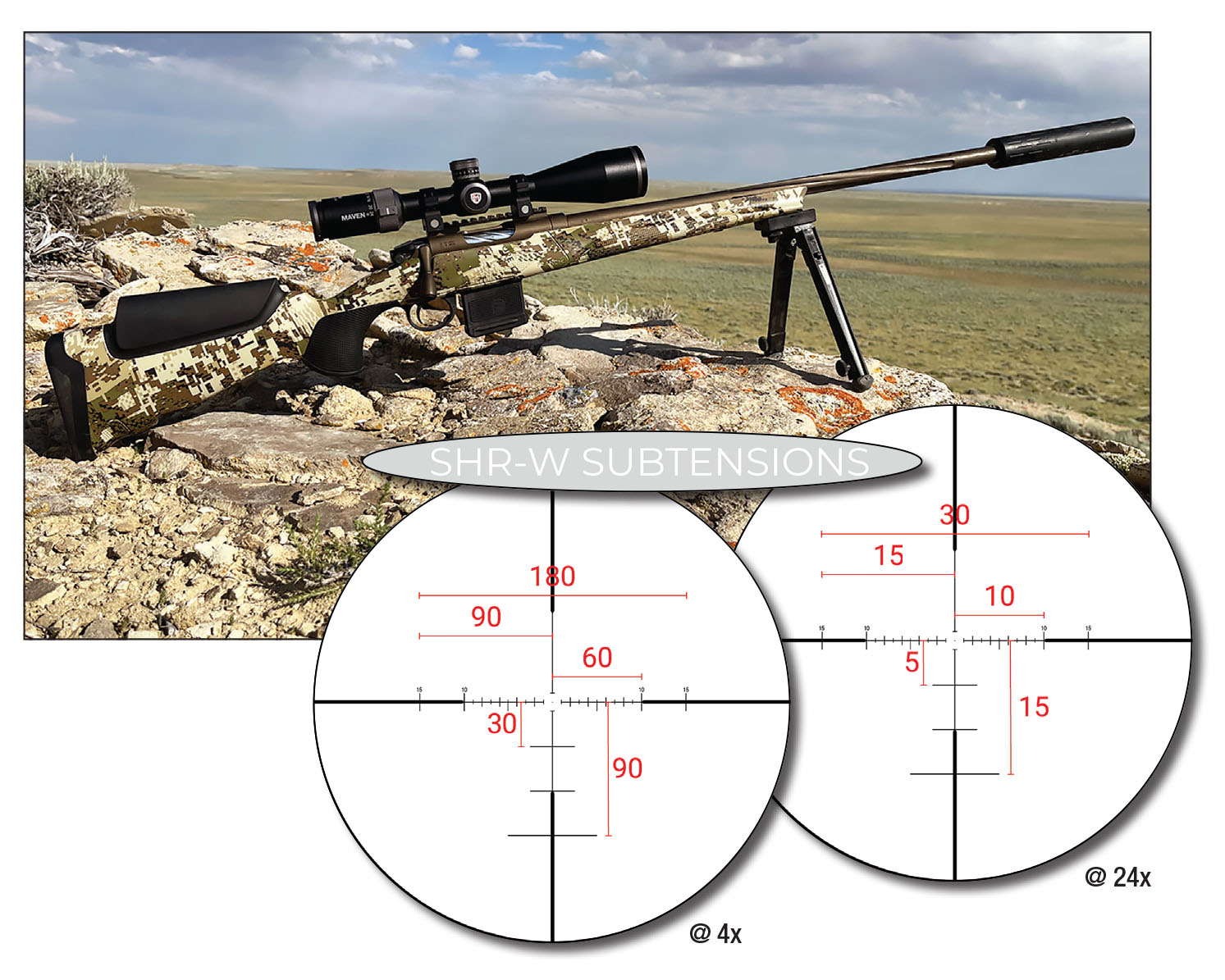
The Maven RS.5 4-24x 50mm SFP was mounted on a 224 Valkyrie-chambered Franchi Momentum Elite Varmint rifle in medium Nightforce X-Treme Duty Ultralite rings, an outfit that proved its worth in western Wyoming.
I’ve been sitting on this one a few months because I really wanted to invest in some serious varmint shooting before reporting on it. I had mounted Maven’s RS.5 4-24x 50mm second focal plane (SFP) scope on my 224 Valkyrie-chambered Franchi Momentum Elite Varmint in medium Nightforce X-Treme Duty Ultralite rings while conducting a mid-summer varmint-load series for LoadData.com. That project was essentially the rifle’s last chance, as previous load development projects with this rifle for
Varmint Rifles & Cartridges, as well as personal load testing, had failed to reveal any standout combinations. Those tests involved mostly heavier bullets, attempting to take advantage of the rifle’s 1:7 twist barrel. All had proven pretty disappointing.
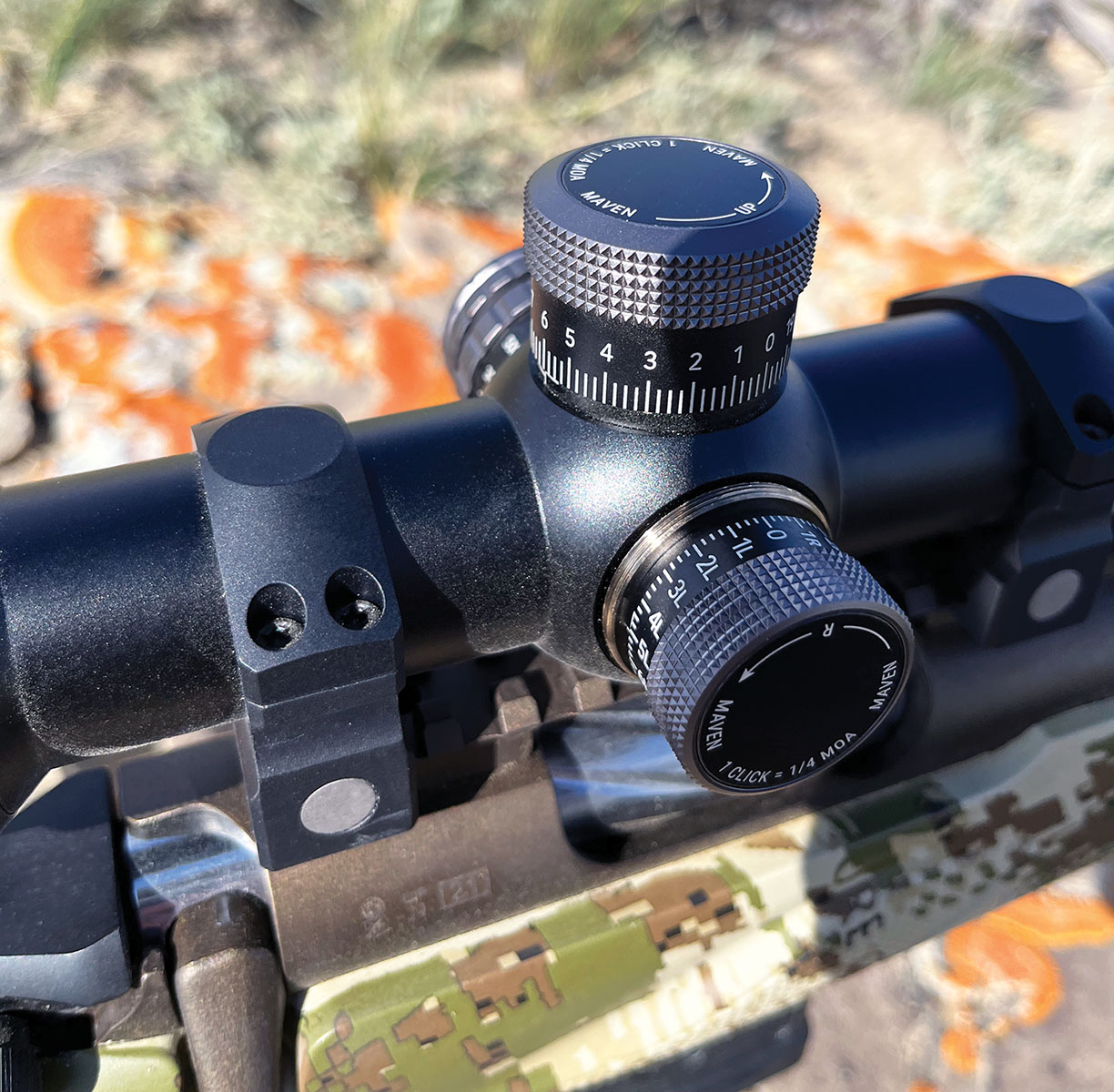
The turrets provided 100-MOA of elevation adjustments and 70-MOA of windage, applied 20-MOA per revolution and included a zero stop.
In the last year, I glass-bedded the action and mounted the Maven optic. I had also decided to see how lighter bullets would behave from this frustratingly finicky rifle. Nosler’s 53-grain Tipped Varmageddon (and Sierra’s 55-grain BlitzKing) turned in some consistent .30- to .35-inch groups – finally what I was looking for! So, the rifle made the cut while agonizing over my rifle lineup for a semi-annual western Wyoming foray to belabor ultra-abundant Richardson’s ground squirrels and white-tailed prairie dogs. With those loads and the Maven RS.5 attached, I finally bonded with a rifle/cartridge combination I’d previously developed an irrational disdain for.
The Maven Optics RS.5 4-24x 50mm SFP really proved its worth on that Wyoming adventure, allowing me to pick off tiny squirrels and fat prairie dogs out to 453 yards (longest confirmed kill) in incessant 15 to 25 mph winds and wicked summer heat shimmer.
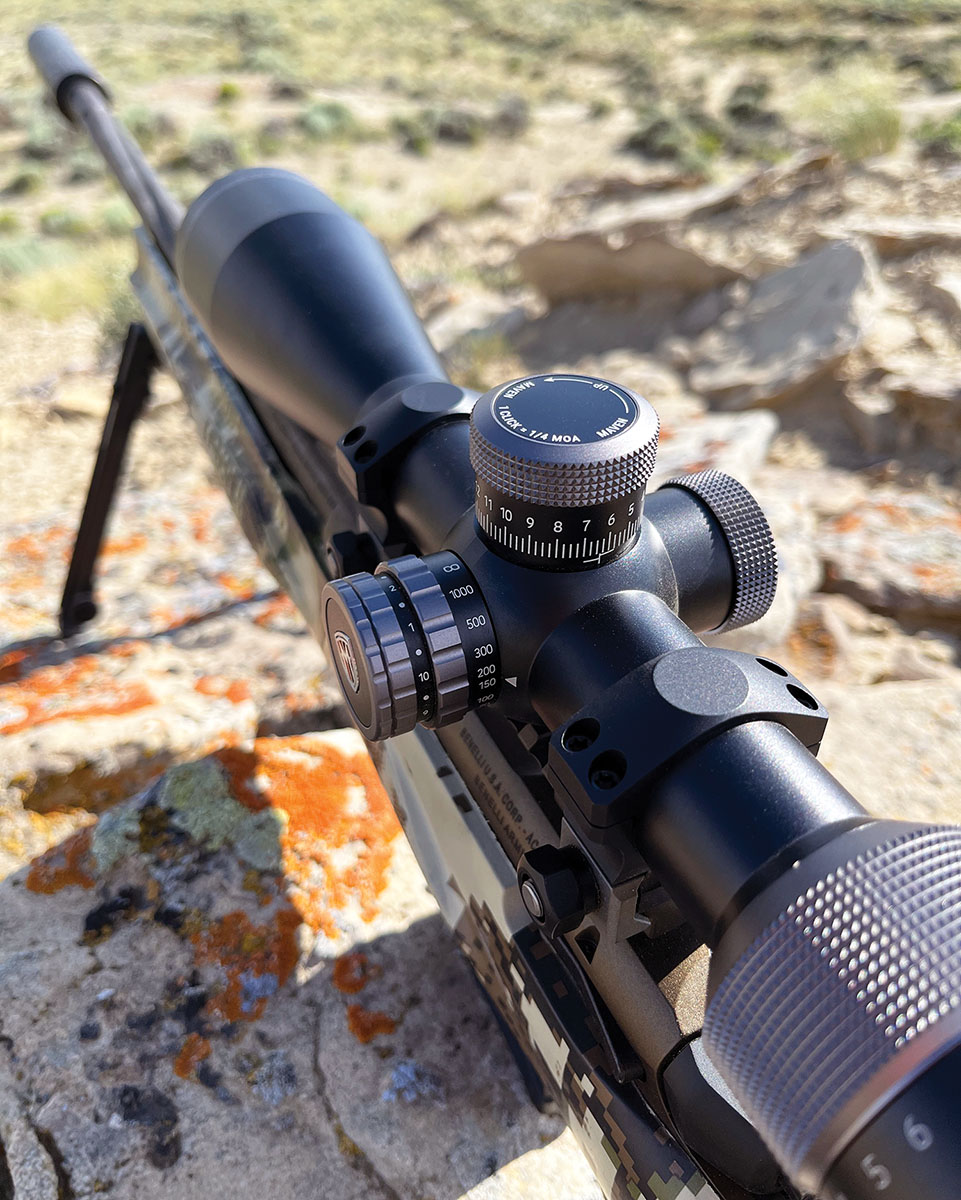
The Maven Optics RS.5 4-24x 50mm included side parallax adjustment marked from 10 to 1,000 yards and to infinity.
During that trip, I really came to admire this scope, so much that I intend to keep it! I have the MOA version with ¼-inch movements in the snazzy black and grey color scheme – MIL and all-black options are also available. This is a SFP scope, as I prefer while shooting distant burrowing rodents, as Maven’s SHR-W Subtension reticle remains ultra fine at all magnifications. This means less target obscured at 24 power. The SFP configuration also meant the reticle didn’t disappear at 4 power if a volunteer varmint popped up at 50 yards to taunt me into burning a round on a gimme shot.
The ultra-fine, etched-glass reticle combined with the exposed top turret that allowed quick dialing for elevation proved varmint ready. The side windage turret is capped, but can be used to dial out wind. Wind was the main theme, and challenge, of our latest Wyoming spree, and I both dialed (when ranges remained constant) and employed the reticle subtensions (for varied distances) for drift corrections with remarkable success. Being a second focal plane scope, the reticle subtensions obviously do not remain constant throughout the magnification range. The reticle included a floating center dot with 1-mil-spaced subtensions (at 24 power) surrounding the aiming point. Windage marks extend to 10 mils on a thin crosshair and another 5 mils on the thicker outer portion to each side of the main crosshair. At 24x there are drop hash marks for 5, 10 and 15 mils (30, 60 and 90 at 4x). It is a simple and non-cluttered approach I prefer.
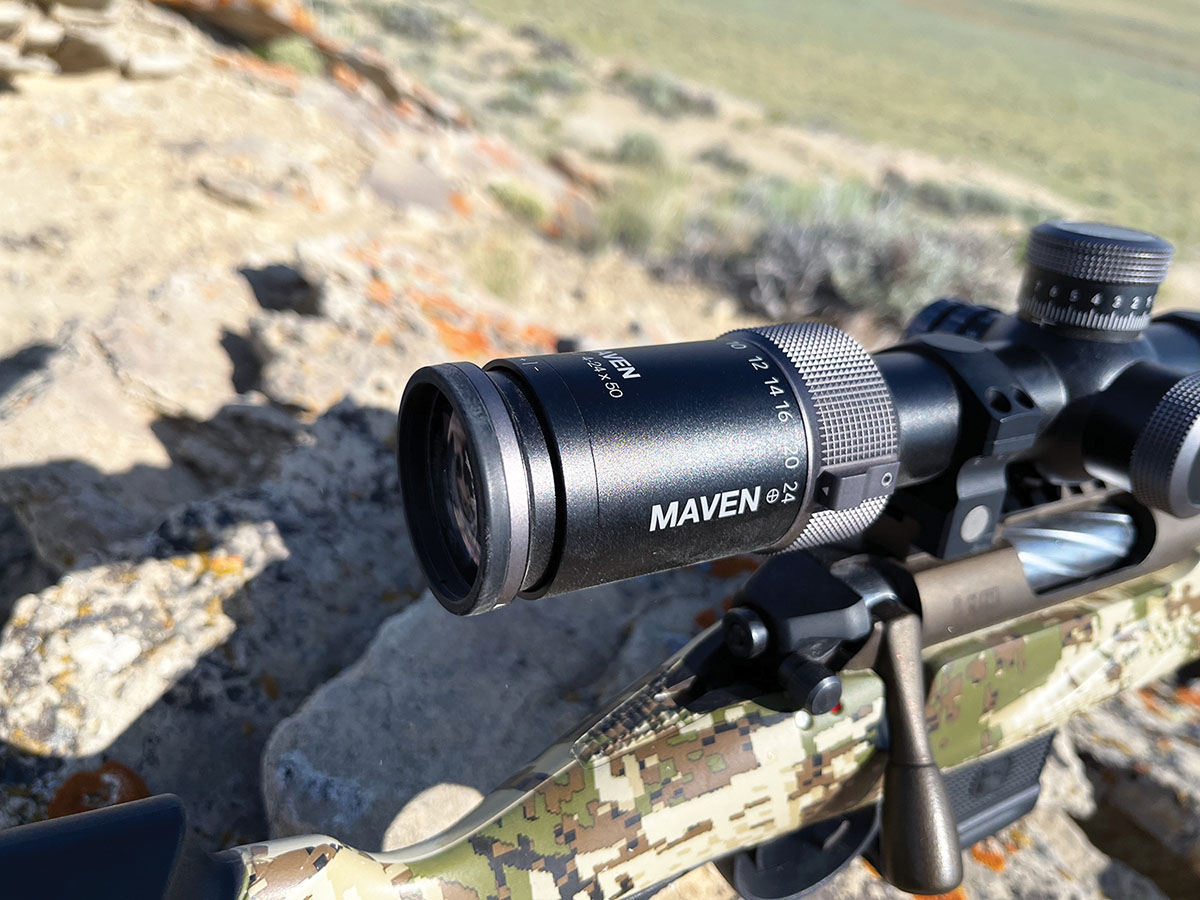
The magnification numbers remain static, while the control ring moves to index the power desired.
Turrets can be set to “0” without tools using the knurled screw caps. The elevation turret includes a no-shim zero stop to index quick returns to zero following major corrections. The elevation turret provides 100-MOA of travel, the windage turret 70-MOA, applied 20-MOA per revolution.
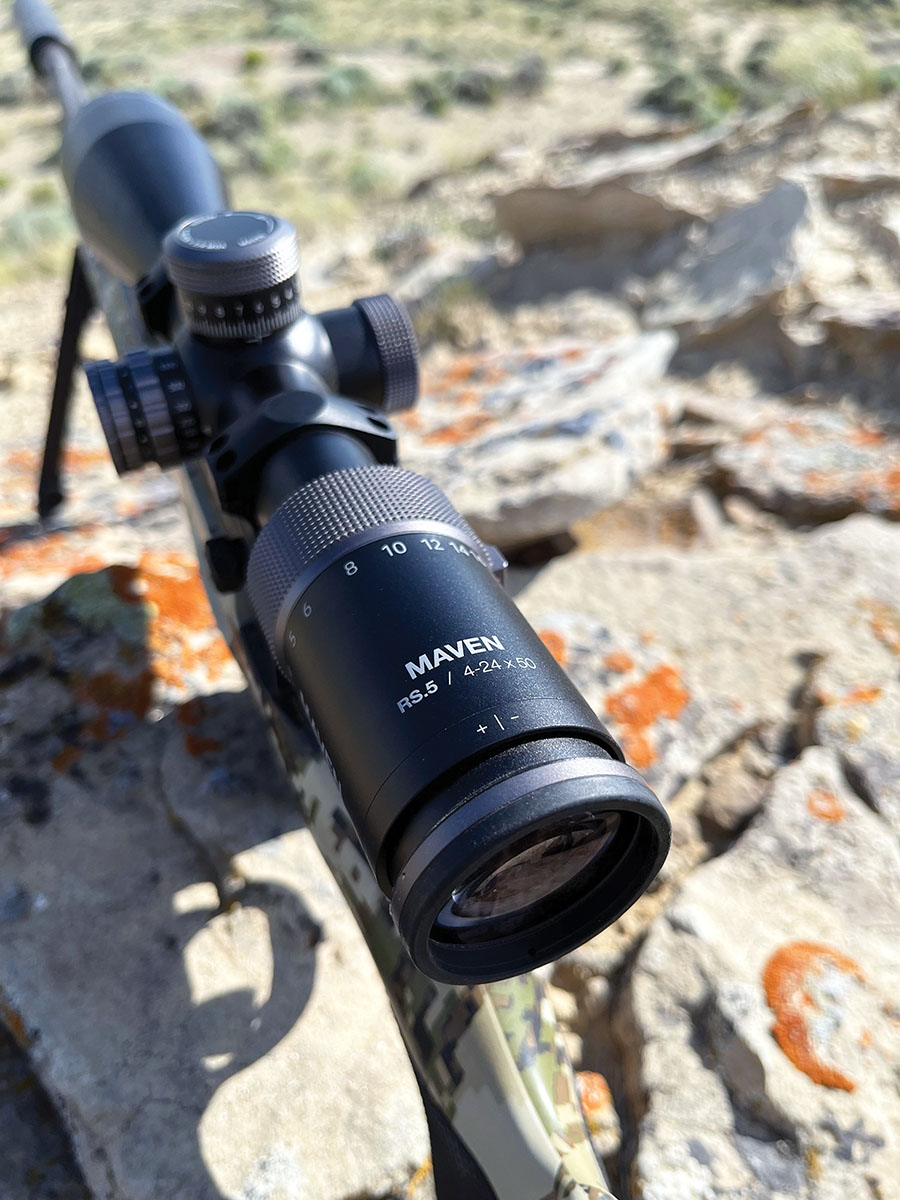
The diopter ring, used to bring the reticle into sharp focus, is the only adjustment area without knurling.
This 30mm scope features a large, light-gathering/shadow-piercing 50mm objective lens, plus a straightforward and uncomplicated layout that I find appealing. I never found the need to employ the red reticle illumination feature, though I can say the control, sandwiched atop the side parallax wheel, is streamlined and unobtrusive. There are 10 intensity settings, with dots between each that extinguish illumination to save battery life while keeping a chosen intensity level single-click available. The parallax wheel is marked 10 yards to infinity and correlated accurately with my laser range-finding binoculars. The two-tone color scheme of the test scope consists of grey knurled areas and black body. All controls are easily manipulated, even while wearing gloves. The diopter adjustment that brings the reticle into sharp focus doesn’t include knurling. The magnification ring holds a raised throw knob, magnification numbers remain static as this knob moves to indicate the magnification level. All adjustment numbers – turrets, parallax, illumination – are fairly small, but proved clear enough even without my granny glasses. The scope provides 3.03 to 3.89 inches of eye relief at 4x, and 3.39 to 3.86 inches at 24x, a lot of latitude for more powerful cartridges producing greater recoil than my Valkyrie.
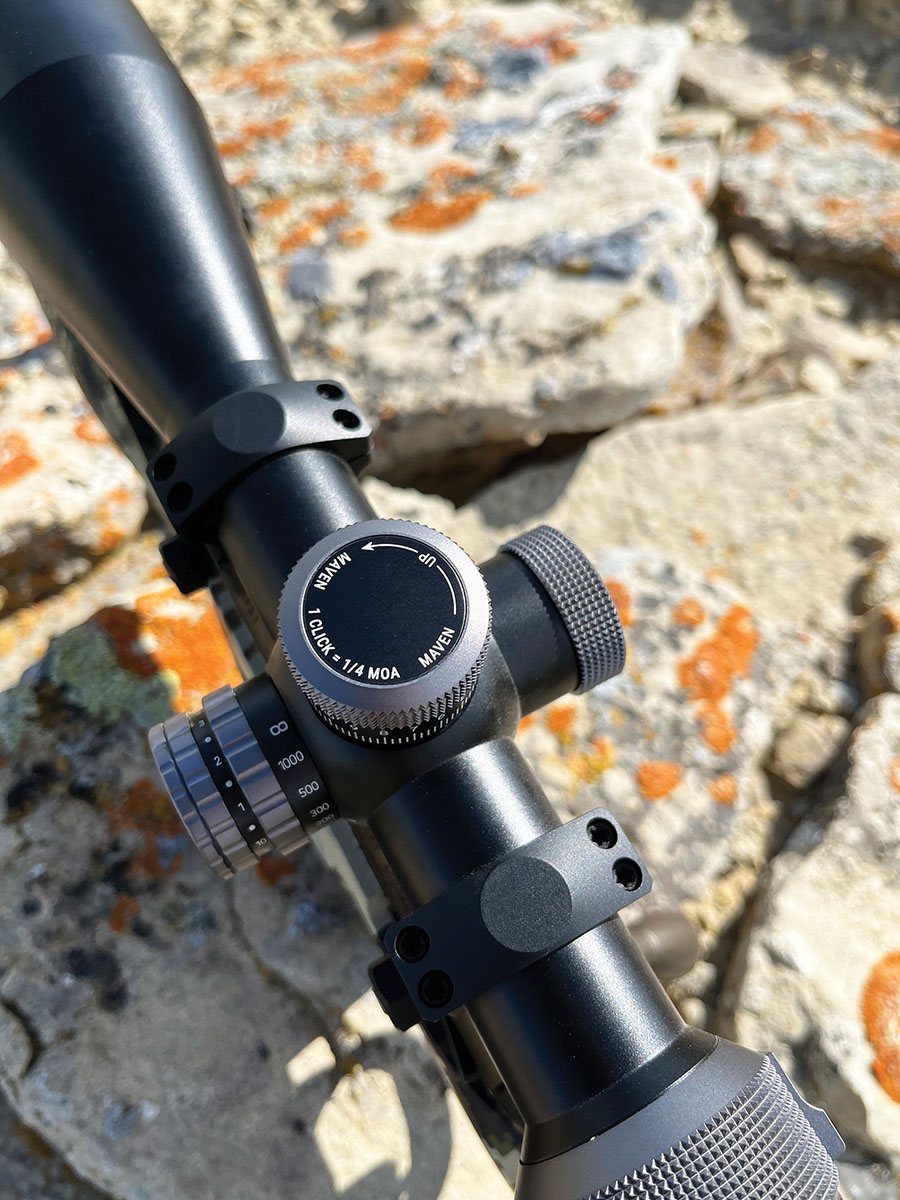
Corrections to the Maven RS.5 4-24x 50mm SFP tested were conducted in ¼-MOA movements. MIL versions are also offered.
Maven’s RS Series extra-low dispersion ED, Japanese-made glass provided clear viewing in all lighting conditions, with a light transmission of 90.1 percent. The advanced phase correction coatings provided exceptional color fidelity and meant I never found the need to twist the magnification ring off 24 power, even in the heat of midday with heat mirage at its worst. The RS.5’s field of view is 27.8 feet on 4x, and 4.6 feet at 24x, explaining why I had no trouble finding targets even in Wyoming’s featureless Red Desert. A touch more than 2 inches of mounting latitude front and back allows mounting the scope exactly where it is needed for shooting comfort. The reticle is supported by the Strelok Pro App ballistics calculator available for iOS or Android smartphones.
The 14.41-inch rifle scope weighs 25.5 ounces (without battery). The fog (nitrogen purged) and waterproof (3 meters) optic comes with a lifetime warranty and can be purchased directly without a retail markup, with a manufacturer’s suggested retail price of around $1,400. The RS.5 comes with a neoprene cover and lens cleaning cloth.
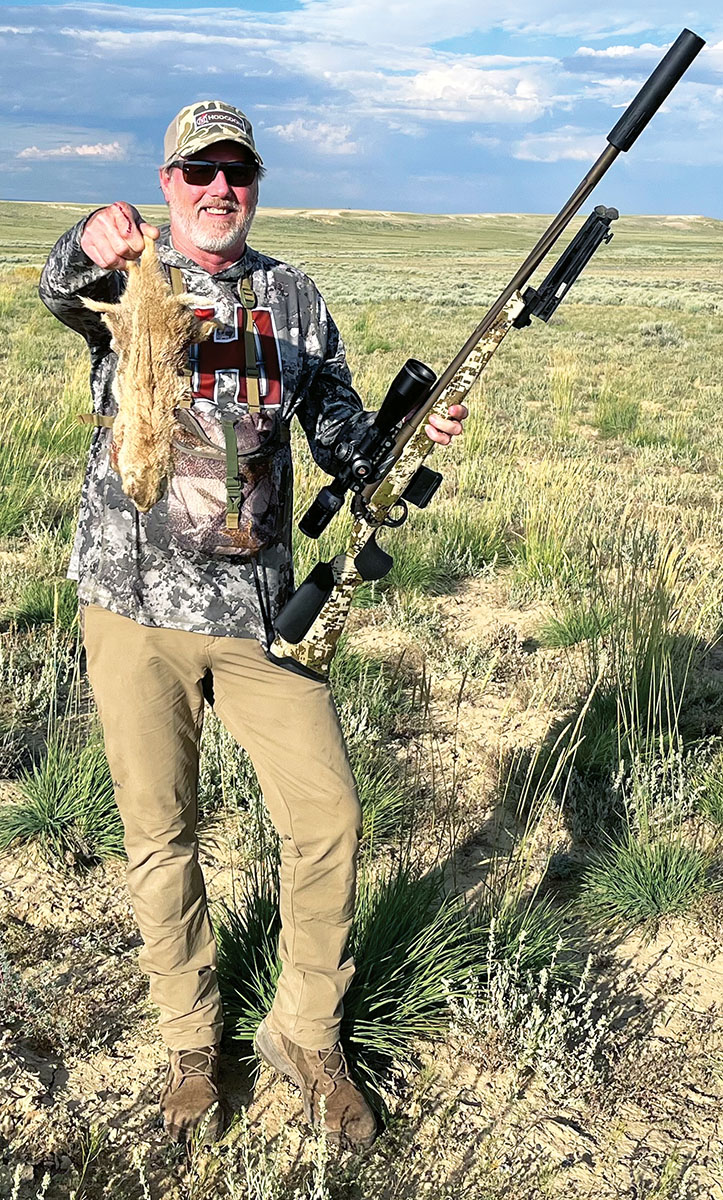
Shooting prairie dogs and ground squirrels in western Wyoming is when Patrick really learned to love the Maven RS.5 4-24x 50mm SFP riflescope.
I’m going to hang on to this one, as it’s sleek, crystal clear and uncomplicated but deadly effective. It helped rekindle a rapport with a rifle that was very close to being sent down the road by making hits on burrowing rodents inside 300 yards almost effortless, and an impressive percentage of 400-plus-yard hits feasible in winds that should have made such endeavors a hit-and-miss proposition.









